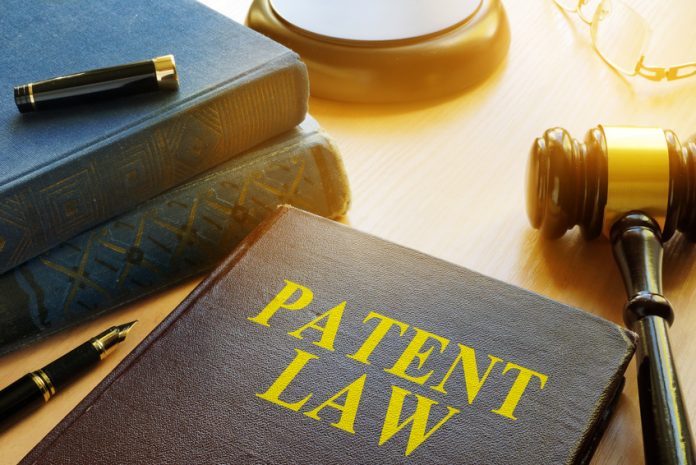This article has been written by Simranjeet Kaur, pursuing a Diploma in Law Firm Practice: Research, Drafting, Briefing and Client Management from LawSikho. It has been edited by Tanmaya Sharma (Associate, LawSikho) and Smriti Katiyar (Associate, LawSikho).
Table of Contents
Introduction
Discovery and invention are the two terms that are often misunderstood because they sound like they are the same thing but in reality, these two have completely different meanings. To understand the difference between both the terms, it is important to understand the individual meanings of both terms. Both of these terms, discovery, and invention mean to bring something new into notice or put light on a new thing, etc. However, these terms have different meanings at the grass-root level.
What is discovery?
The act of searching and exploring something that already exists in nature or the environment but was never really recognized before is called ‘discovery.’ The recognition of something new which already exists is discovery. Something which has been there in nature or environment but never came in front of the human eyes and has been recognized now, therefore it will be treated as ‘new.’
For example, fossils. Scientists discover fossils that have existed for thousands of years but have never really been recognized by humans before. Another example would be the new species of plants or animals. Therefore, the things, etc which were there in nature for quite a long time but were not recognized by us humans would come under the ambit of a discovery.
What is an invention?
The creation or designing of something or the process of creating or designing something that never existed before, by using someone’s intellect or knowledge, skills, etc is called an ‘invention.’ The creation or designing of something new with the help of one’s own knowledge, ideas, or experiments comes under the meaning of an invention.
For example, the creation of television or cell phones never existed before. These were created by scientists by using their own ideas and experiments. However, it is to be noted that the parts which were used in creating such an invention already existed before but the scientists used such parts in creating something new and that is called an invention.
Discovery vs. Invention
The following are the major differences between a discovery and an invention:
- Prior existence: Discoveries are something which already existed but we did not have the knowledge about the same till it was recognized, whereas inventions, on the other hand, are the things, etc which never existed before but only the parts or the things which were used in creating such an invention, existed before.
- Occurrence: The occurrence of discoveries is natural; however, inventions are human-made occurrences of things or objects.
- Involves: Discoveries involve exploration whereas inventions involve experimentation.
- Originality: Although both discovery and invention are considered to be ‘new’, since discovery is related to the findings of something which already existed in nature, discovery is not original. However, the invention is related to the creation of something new by using prior existing things, therefore, an invention is original.
- Patentability: A discovery is not patentable, whereas, an invention is patentable.
Correlation between discovery and invention
Let’s take the example of the telescope and the mountains of the moon. The telescope was invented by a Dutchman, an eyeglass maker. It was because of the invention of the telescope that, Galileo Galilei was able to look far enough into the sky to discover the mountains of the moon. Galileo did not invent the mountains of the moon but rather he discovered them with the help of invention i.e., the telescope.
Just like that, inventions can lead to discoveries and similarly, discoveries can also lead to inventions. For example, Benjamin Franklin discovered the electrical effects of lightning which further led him to invent the lightning rod which is still in use and helps in making buildings much safer during thunderstorms. Therefore, inventions and discovery, sometimes, correlate with each other.
The Patents Act
An invention is defined under Section 2(j) of the Patents Act, 1970 as “a new product or process involving an inventive step and capable of industrial application.” Inventive Step here means that the invention involves some kind of technological advancement which was not there before. Industrial applicability means that the invention must have some applicability that can be used in the industry.
Section 3(d) of the Act, provides for inventions that are not patentable under the Act. The Act also specifically states that discoveries are not patentable under the Act. Section 3 (c) and (d) of the Act states that the mere discovery of a new substance or scientific principle, etc is not patentable. Therefore, according to the Patents Act, an invention that is either related to a product or a process that is new and has industrial applicability, and also involves an inventive step, can be patented under the act.
Discovery under The Patents Act
The Act clearly states that discovery is not patentable and is excluded from patent protection. Section 3 (c) and (d) clearly states that mere discovery of something that already exists in nature is not patentable under the Act because such discovery is not new and hence would not be considered as an invention. Under the Patents Act, only inventions are patentable and discoveries are not.
The reason for a discovery being non-patentable under the Act is that discovery of a new form, substance, etc is not a new thing. It already existed in nature and hence it cannot be treated as a new invention since it did not involve any inventive steps, skills, etc. Therefore, such a discovery would not be treated as an invention and shall be non-patentable under the Act.
Invention under The Patents Act
The Patents Act, 1970 defines an invention as a new product or a process that has an inventive step and has some industrial applicability. For an invention to qualify to get a patent, it has to fulfill certain conditions which are as follows:
- It must be new or novel;
- It must have industrial applicability;
- It must involve some inventive step;
- It shall not fall under the ambit of Sections 3 and 4 of the Act.
If the above-mentioned conditions are fulfilled then the said invention can be patented under the Act.
Section 3 and 4 of the Act deals with inventions that cannot be patented. The following are not patentable under the act:
- Inventions that are frivolous and contrary to the natural laws;
- Inventions that go against public morality;
- Inventions that are a mere discovery of something that already exists in nature;
- The mere discovery of a form already existing in nature does not lead to enhancement of efficacy;
- Mere admixing of mixtures leading to the aggregation of properties are non-patentable;
- Mere aggregation or duplication of devices working in a known way is not an invention;
- Horticulture or agricultural method is non-patentable;
- Medicinal, curative, prophylactic, diagnostic, therapeutic for treating diseases in humans and animals are non-patentable;
- Essential biological processes for the production or propagation of animals and plants is not an invention;
- Simple mathematical or the business or the computer programs are not an invention;
- Aesthetic creation is not an invention;
- Mental act, rule, or method is not an invention;
- Presentation of information is non-patentable;
- The topography of integrated circuits is non-patentable;
- Traditional knowledge is not an invention;
- Atomic-energy inventions are non -patentable.
Section 4 deals with inventions relating to atomic energy that is also not patentable under the Act. Therefore, the Patents Act clearly states that an invention is something that is new or novel and has some industrial applicability and it must also involve an inventive step. However, discovery is not specifically defined in the Act.
Conclusion
It can be concluded that discovery and invention may sound very similar but have two different meanings. Discovery is different from invention and vice versa. The definition of invention is there in the Patents Act. However, the term discovery is not clearly defined anywhere in the Act which creates a lot of confusion in the minds of people. Since, both the terms sound so similar that they are usually misunderstood by each other.
However, both the terms are also not polar opposite to each other. Discoveries are derived from nature whereas inventions are man-made and require some knowledge, skills, and human intellect. They both are associated with each other and as mentioned above earlier, both the terms can and may lead to each other. It can be seen in history that discoveries have led to inventions many times and also vice versa.
In the end, it can be said that it is because of discovery and inventions that humankind has seen so many changes in the world and these changes have affected our lives in many different ways. Therefore, discovery and inventions are helpful in uncovering the covered or hidden things, phenomena, etc that might be of great help for the human race.
References
- The Patents Act, 1970
- https://ipindia.gov.in/writereaddata/Portal/ev/sections/ps3.html
- http://www.differencebetween.info/difference-between-discovery-and-invention
- https://www.effectualservices.com/section-3-of-indian-patent-act-importance-and-interpretation/
- https://www.wipo.int/edocs/pubdocs/en/patents/925/wipo_pub_925.pdf
LawSikho has created a telegram group for exchanging legal knowledge, referrals, and various opportunities. You can click on this link and join:
https://t.me/joinchat/J_0YrBa4IBSHdpuTfQO_sA
Follow us on Instagram and subscribe to our YouTube channel for more amazing legal content.
 Serato DJ Crack 2025Serato DJ PRO Crack
Serato DJ Crack 2025Serato DJ PRO Crack











 Allow notifications
Allow notifications



